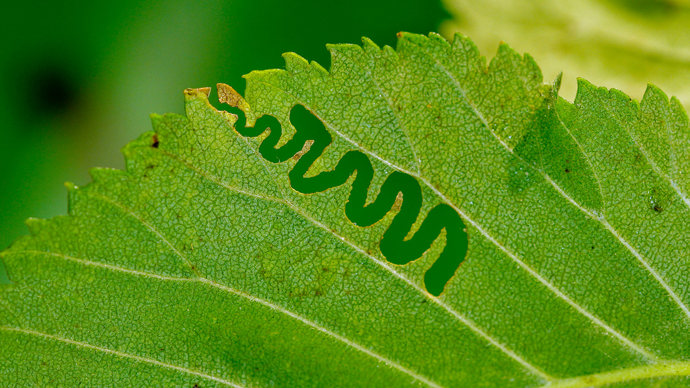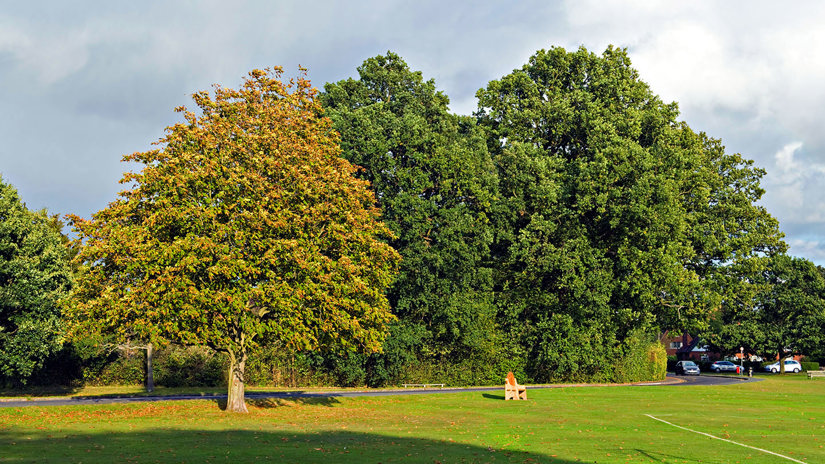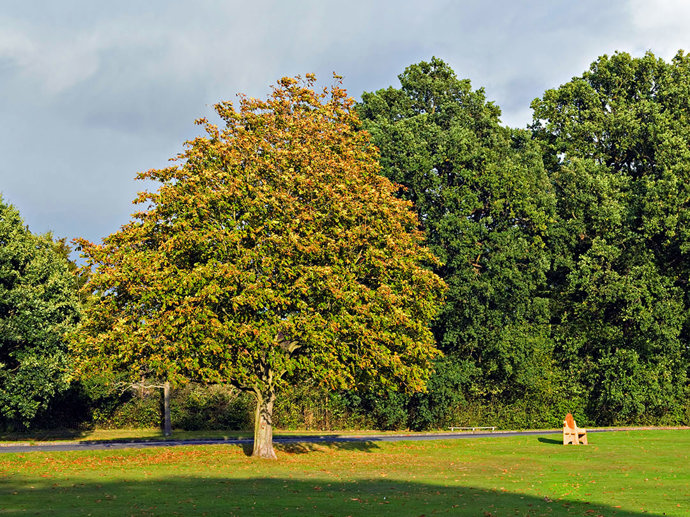Common name: elm zig-zag sawfly
Scientific name: Aproceros leucopoda
What does it affect?: English elm, wych elm, field elm
Areas affected so far: the south-east and East Midlands
Origin: Japan and parts of China
The newest threat to our already damaged elm populations, the larvae of the elm zig-zag sawfly can defoliate whole trees.
Common name: elm zig-zag sawfly
Scientific name: Aproceros leucopoda
What does it affect?: English elm, wych elm, field elm
Areas affected so far: the south-east and East Midlands
Origin: Japan and parts of China
The most distinctive symptom of the pest is the zig-zag feeding pattern made by the larvae. As the larvae become older, they just eat the whole leaf and the pest is harder to identify.
The elm zig-zag sawfly is a non-native species of sawfly. The adult is a small black, wasp-like sawfly with white legs. The larvae are tiny green caterpillars.
Adult sawflies lay their eggs into the serrations at the edges of elm leaves and the larvae hatch within 4-8 days. The larvae develop over a further 15-18 days, spending this time feeding on the leaves. They then cocoon on the underside of the leaf, emerging as adults within 7 days.
As the lifecycle is very short, the elm zig-zag sawfly can produce several generations in one summer and infestations can happen very quickly. Adding to this, no males of the species have been recorded which means the sawfly might reproduce by parthogenesis (reproduction without fertilisation) so its numbers can increase rapidly.
The elm zig-zag sawfly is currently in the south-east of England and the East Midlands but spreading. It was introduced to Europe in 2003, spreading rapidly and reaching the UK by 2017.

Credit: © Forest Research
We don’t know how this pest got here. It is likely that the elm zig-zag sawfly spread by ‘hitch-hiking’ on vehicles as the spread seems to follow major roads across continental Europe. They might have also spread through imported elms for planting.
We also don’t know the full distribution of the sawfly in the UK, but it is expected that it will continue to spread.
If the populations get so high that trees are defoliated year after year, it can become weakened and more vulnerable to attacks from other pests and diseases, as well as environmental stresses like drought.
Defoliation also poses a threat to species that rely on the elm, like the white-letter hairstreak butterfly and the white-spotted pinion moth.
To combat pests and diseases like the elm zig-zag sawfly we have:


We are fighting back against pests and diseases. Find out what we're doing to prevent the spread and protect the UK’s trees.
More pests and diseases: